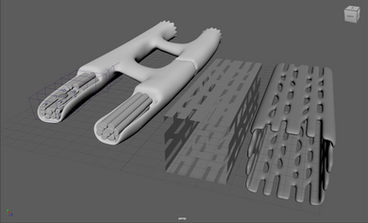Graduate Thesis
Caring for Your Heart During Survivorship After Pediatric Cancer:
A visual education guide on chemotherapy-induced cardiotoxicity
This project was created as a resource for childhood cancer patients and their families attending the HOPE Cancer Survivorship Program at Children’s Hospital Colorado on heart toxicity caused by chemotherapy. Despite being effective agents against pediatric cancer, anthracyclines (a type of chemotherapy drug) are known to cause heart damage when used for treatment. Because heart toxicity is often a late side effect, patients may not know to ask how their heart is affected or what that means for follow-up care.

Through collaboration with the HOPE Cancer Survivorship Program, this education guide with supporting interactive 3D media was created to increase the health literacy of chemotherapy-induced cardiotoxicity for childhood cancer survivors and their families. The pamphlet will be provided in survivorship clinics and will be available to take home after. By supporting health literacy, the guide aims to equip survivors with knowledge for advocacy, and foster communication between patients and their care team so patients can be connected with resources for long-term follow-up care.


What is chemotherapy-induced cardiotoxicity?
Chemotherapy-induced cardiotoxicity is a potential chemotherapy side effect that can harm the heart. The heart is made up of muscle cells called cardiomyocytes. When anthracyclines (such as Doxorubicin and Daunorubicin) interact with the heart, they can damage cardiomyocytes. Damage to cardiomyocytes causes a part of the heart, the left ventricle, to become weakened. A weakened left ventricle can cause the heart to not pump blood throughout the body as effectively as a healthy heart would, and this can impact quality of life outcomes for pediatric cancer survivors.
Pediatric cancer can affect any child and their family.
Having cancer as a child can lead to uncertainty as adults,
and patients can remain affected long after completing treatment.
This is why it is important for pediatric cancer survivors to be equipped with proper information as they progress into survivorship and adulthood.

3D Modeling Process
for Cardiomyocyte model








